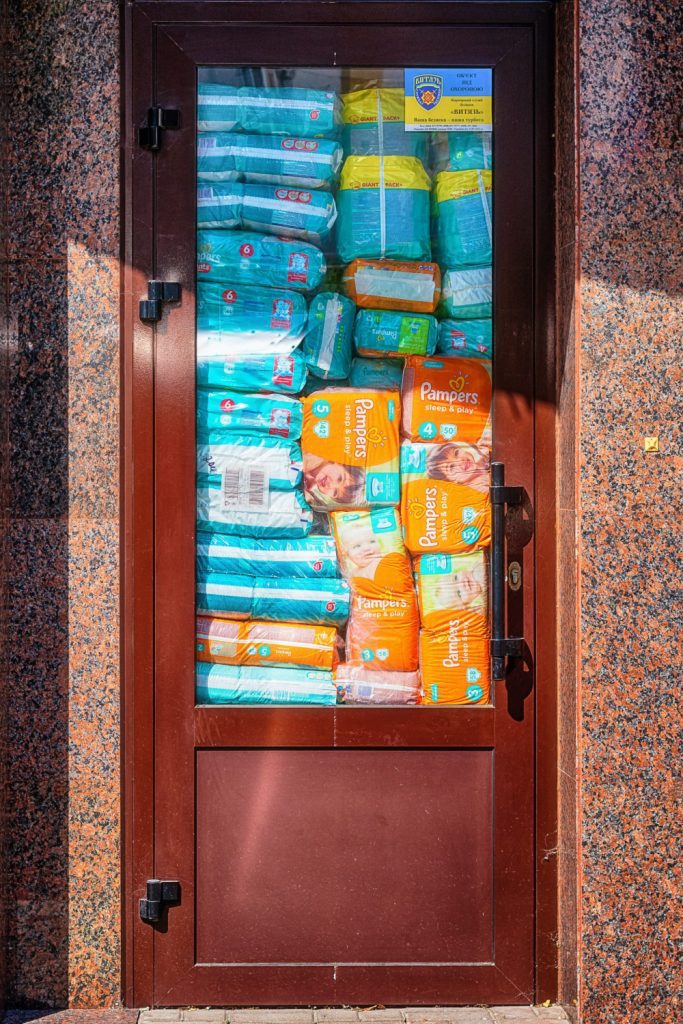Are cloth nappies better for the environment?
If you are concerned by the environmental burden of disposable nappies, you may be considering cloth nappies as a more sustainable option.
However, given there can be a lot of noise (and marketing hype!) out there, many parents are looking for some facts to help guide their decisions. If you are wondering whether cloth nappies really are better for the environment, this article is for you.
Read on for an overview of the environmental impact of cloth nappies versus disposable nappies.
Disposable nappies are an enormous landfill issue

Each child will go through an estimated 4,000 – 6,000 nappies by the time they are fully toilet trained. In Australia alone, over two billion nappies are disposed of in landfill each year, and it can take up to 500 years for each nappy to decompose.
A UK study calculated that, even at conservative figures of just over 4 nappy changes per day, a child will contribute 146.5kg of disposable nappies to landfill by the time they are 2.5 years old.[1] This doesn’t even include the fact that many children will use more than 4 nappies per day, and are often in nappies longer (again, this varies hugely but averages around 3 years of age). It also doesn’t account for the human waste disposed of inside of the nappies!
Given disposable nappies constitute the second largest volume of household waste, many councils across Australia are turning their attention to the issue. A growing number now provide information and incentives to encourage more families to use cloth nappies.
Biodegradable nappies: an eco-friendly alternative?
A number of styles and brands of biodegradable nappies have joined the market in recent years. While still disposable, they are marketed as more eco-friendly nappy options. Biodegradable nappies often contain fewer chemicals and plastics, and are usually more expensive than standard disposable nappies.
However biodegradable nappies can still take many years to decompose, even under the right conditions. Unfortunately, many people still tend to dispose of them in plastic nappy bags which will inhibit the decomposing process. Biodegradable nappies are also generally combined with other landfill waste, rather than sent to the dedicated facilities which are required for them to break down properly.
Reusable vs disposable nappies: what does the research say?
We sometimes see the environmental benefits of reusable nappies disputed. A common concern is the amount of water used to wash the nappies. This is understandable, particularly in Australia where water resources are often scarce. What these objections fail to take into account are the large volumes of water used in the manufacturing process for disposable nappies.
A study by the University of Queensland[2] considered the whole life cycle of both reusable and disposable nappies from growth of raw materials to manufacturing, transportation, usage and disposal. It found that while water usage throughout the life cycle was comparable, disposable nappies consumed far greater quantities of energy and land resources, and produced vastly greater amounts of solid waste (roughly 20 times the amount of cloth nappies).
In addition to water, approximately one cup of crude oil is used to produce each disposable nappy. Most cloth nappies are produced from materials such as cotton, bamboo and hemp. The latter two especially require fewer water and land resources to cultivate.
Naturally, the water, energy and detergent used to wash and dry cloth nappies will have an environmental impact. However, there are definitely methods you can use to minimise these.
How can I further minimise the environmental impact of cloth nappies?
Using a front loader machine and/or connecting your washing machine to a rainwater tank system will greatly increase water and energy efficiency. There are also simple things you can do to minimise water and energy usage, such as:
- waiting until you have a full load of nappies to wash (see this article for some ideas on how to bulk out your loads)
- avoiding the use of fabric softener
- line drying cloth nappies instead of using a dryer.
In addition, using your nappies on additional children, or buying and selling secondhand will further lessen the environmental impact.
In summary, studies show that the environmental benefits of reusable nappies still far outweigh disposable nappies. This is the case even after factoring in energy and water usage for manufacturing and laundering of cloth nappies.
References
[1] https://assets.publishing.service.gov.uk/government/uploads/system/uploads/attachment_data/file/291130/scho0808boir-e-e.pdf
[2] O’Brien, K. R., Olive, R., Hus, Y.C., Bell, R., Morris, L., and Kendall, N. (2009). Life Cycle Assessment: Reusable and disposable nappies in Australia. 6th Australian Conference on Life Cycle Assessment, Melbourne, 17-19 February. Melbourne, Australia: Australian Life Cycle Assessment Society.
